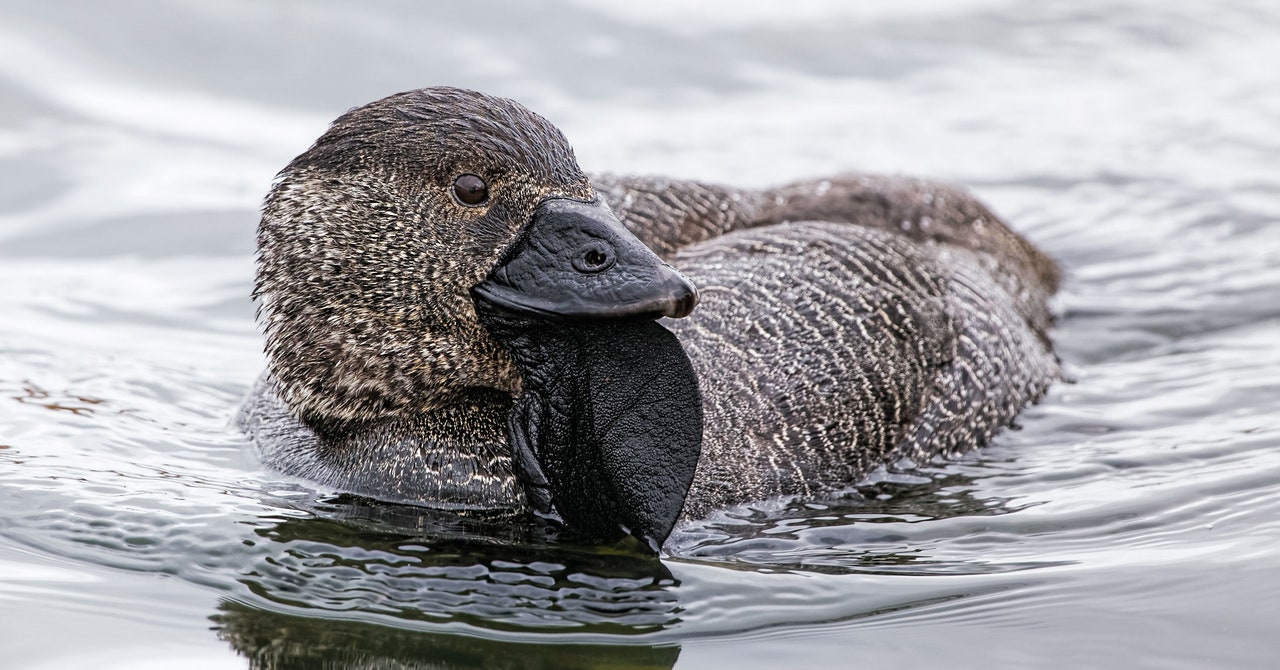
In 1987, a researcher in Australia recorded a male musk duck named Ripper producing a vocalization that sounded very much like “You bloody fool,” along with sounds resembling a slamming door and a soft mumbling. A second duck in the region was recorded in 2000 imitating a Pacific black duck’s call. Both recordings survived, but they were never analyzed in any detail, and most of the accompanying records were destroyed in a wildfire that swept through the Tidbinbilla Nature Reserve in 2003.
Now retired, that original researcher, Peter J. Fullagar, has teamed up with Carel ten Cate, a biologist at Leiden University in the Netherlands, to perform the first in-depth analysis of those recordings. That analysis confirmed that Ripper’s distinctive vocalizations are indeed a form of mimicry—likely the first comprehensively documented example of musk ducks being able to mimic sounds. The researchers described their findings in a new paper published in the journal Philosophical Transactions of the Royal Society B, part of a special issue on vocal learning in animals and humans.
Definitions of what constitutes so-called vocal-production learning can vary, but if an animal reared in isolation produces vocalizations that deviate sharply from what is typical of the species or is able to imitate the sounds of other species, those are deemed evidence for the phenomenon. Vocal-production learning is critical to human speech and language development, but there have only been a handful of confirmed reports of this in animal species—most notably, whales, dolphins, bats, elephants, songbirds, parrots, and hummingbirds.
Musk ducks derive their name from the pungent scent produced by the males during mating season. Males are generally up to three times larger than the females and sport a large, black lobe below the bill that can be in either a flaccid or “turgid” state. Male mating displays can involve raising and lowering tails and kicking sideways and backward with the feet to produce large splashes in the water. Males have also been known to produce whistling vocalizations and flaunt their turgid lobes to attract females. Musk ducks are the only living member of their particular genus and are only distantly related to other birds capable of mimicking sounds with their vocalizations.
Lonely Boy
The males are so aggressive that musk ducks are rarely bred in captivity, but Ripper was an exception. He was hatched from an egg in September 1983 in the Tidbinbilla Nature Reserve southwest of Canberra. A foster hen performed brooding duties for the egg, but after hatching, Ripper was raised and fed by human handlers in isolation.
When he was a few weeks old, Ripper was moved to a small pond with other captive-reared waterfowl and was later kept in a small pen concealed from public view by shrubbery. According to the authors, this pen was divided into two spaces, connected by holes below the water level. Two female ducks from another reserve could fit through the holes, but Ripper could not. The females were in the adjoining space when Ripper produced his legendary vocalizations.
Fullagar recorded Ripper with a Sony Walkman Professional cassette recorder and Sennheiser MKH 816 microphone on July 19 and 26, 1987, when the musk duck was 4 years old. The vocalizations included a slamming-door sound (whuk whuk whuk) mimicking the opening and closing of a double-hung spring door near where Ripper was kept in the first few weeks after hatching. Sometimes the slamming-door sound was followed by a soft mumble that sounded speech-like but with no discernible words. The most interesting vocalization sounded like Ripper was saying, “You bloody fool!”—recorded when Fullagar was nearby “because that was the way to enrage [Ripper] into display,” the authors wrote.
The recordings were preserved at the Australian National Wildlife Collection but remained unnoticed by researchers for decades until ten Cate heard about them. “When I read it at first I thought, ‘It’s a hoax, it can’t be true,’” ten Cate told The Guardian. “But it turned out to be true.”


